《Introductory econometrics A modern approach Seventh edition》
| 作者 | Jeffrey M.Wooldridge 编者 |
|---|---|
| 出版 | Cengage |
| 参考页数 | 826 |
| 出版时间 | 2020(求助前请核对) 目录预览 |
| ISBN号 | 9781337558860 — 求助条款 |
| PDF编号 | 814074898(仅供预览,未存储实际文件) |
| 求助格式 | 扫描PDF(若分多册发行,每次仅能受理1册) |

CHAPTER1The Nature of Econometrics and Economic Data1
1-1 What Is Econometrics?1
1-2 Steps in Empirical Economic Analysis2
1-3 The Structure of Economic Data5
1-3a Cross-Sectional Data5
1-3b Time Series Data7
1-3c Pooled Cross Sections8
1-3d Panel or Longitudinal Data9
1-3e A Comment on Data Structures10
1-4 Causality,Ceteris Paribus,and Counterfactual Reasoning10
Summary14
Key Terms15
Problems15
Computer Exercises15
PART1Regression Analysis with Cross-Sectional Data19
CHAPTER 2The Simple Regression Model20
2-1 Definition of the Simple Regression Model20
2-2 Deriving the Ordinary Least Squares Estimates24
2-2a A Note on Terminology31
2-3 Properties of OLS on Any Sample of Data32
2-3a Fitted Values and Residuals32
2-3b Algebraic Properties of OLS Statistics32
2-3c Goodness-of-Fit35
2-4 Units of Measurement and Functional Form36
2-4a The Effects of Changing Units of Measurement on OLS Statistics36
2-4b Incorporating Nonlinearities in Simple Regression37
2-4c The Meaning of “Linear” Regression40
2-5 Expected Values and Variances of the OLS Estimators40
2-5a Unbiasedness of OLS40
2-5b Variances of the OLS Estimators45
2-5c Estimating the Error Variance48
2-6 Regression through the Origin and Regression on a Constant50
2-7 Regression on a Binary Explanatory Variable51
2-7a Counterfactual Outcomes,Causality,and Policy Analysis53
Summary56
Key Terms57
Problems58
Computer Exercises62
CHAPTER3 Multiple Regression Analysis:Estimation66
3-1Motivation for Multiple Regression67
3-1a The Model with Two Independent Variables67
3-1 b The Model with k Independent Variables69
3-2 Mechanics and Interpretation of Ordinary Least Squares70
3-2a Obtaining the OLS Estimates70
3-2b Interpreting the OLS Regression Equation71
3-2c On the Meaning of “Holding Other Factors Fixed”in Multiple Regression73
3-2d Changing More Than One Independent Variable Simultaneously74
3-2e OLS Fitted Values and Residuals74
3-2f A “Partialling Out” Interpretation of Multiple Regression75
3-2g Comparison of Simple and Multiple Regression Estimates75
3-2h Goodness-of-Fit76
3-2i Regression through the Origin79
3-3 The Expected Value of the OLS Estimators79
3-3a Including Irrelevant Variables in a Regression Model83
3-3b Omitted Variable Bias:The Simple Case84
3-3c Omitted Variable Bias:More General Cases87
3-4 The Variance of the OLS Estimators87
3-4a The Components of the OLS Variances:Multicollinearity89
3-4b Variances in Misspecified Models92
3-4c Estimating σ2:Standard Errors of the OLS Estimators93
3-5 Efficiency of OLS:The Gauss-Markov Theorem95
3-6 Some Comments on the Language of Multiple Regression Analysis96
3-7 Several Scenarios for Applying Multiple Regression97
3-7a Prediction98
3-7b Efficient Markets98
3-7c Measuring the Tradeoff between Two Variables99
3-7d Testing for Ceteris Paribus Group Differences99
3-7e Potential Outcomes,Treatment Effects,and Policy Analysis100
Summary102
Key Terms104
Problems104
Computer Exercises109
CHAPTER 4Multiple Regression Analysis:Inference117
4-1 Sampling Distributions of the OLS Estimators117
4-2 Testing Hypotheses about a Single Population Parameter:The tTest120
4-2a Testing against One-Sided Alternatives122
4-2b Two-Sided Alternatives126
4-2c Testing Other Hypotheses about β j128
4-2d Computing p-Values fort Tests130
4-2e A Reminder on the Language of Classical Hypothesis Testing132
4-2f Economic,or Practical,versus Statistical Significance132
4-3 Confidence Intervals134
4-4 Testing Hypotheses about a Single Linear Combination of the Parameters136
4-5 Testing Multiple Linear Restrictions:The F Test139
4-5a Testing Exclusion Restrictions139
4-5b Relationship between F and t Statistics144
4-5c The R-Squared Form of the F Statistic145
4-5d Computing p- Values for F Tests146
4-5e The F Statistic for Overall Significance of a Regression147
4-5f Testing General Linear Restrictions148
4-6 Reporting Regression Results149
4-7 Revisiting Causal Effects and Policy Analysis151
Summary152
Key Terms154
Problems154
Computer Exercises159
CHAPTER 5Multiple Regression Analysis:OLS Asymptotics163
5-1Consistency164
5-1a Deriving the Inconsistency in OLS167
5-2 Asymptotic Normality and Large Sample Inference168
5-2a Other Large Sample Tests:The Lagrange Multiplier Statistic172
5-3 Asymptotic Efficiency of OLS175
Summary176
Key Terms176
Problems176
Computer Exercises178
CHAPTER 6 Multiple Regression Analysis:Further Issues181
6-1Effects of Data Scaling on OLS Statistics181
6-1a Beta Coefficients184
6-2 More on Functional Form186
6-2a More on Using Logarithmic Functional Forms186
6-2b Models with Quadratics188
6-2c Models with Interaction Terms192
6-2d Computing Average Partial Effects194
6-3 More on Goodness-of-Fit and Selection of Regressors195
6-3a Adjusted R-Squared196
6-3b Using Adjusted R-Squared to Choose between Nonnested Models197
6-3c Controlling for Too Many Factors in Regression Analysis199
6-3d Adding Regressors to Reduce the Error Variance200
6-4 Prediction and Residual Analysis201
6.4a Confidence Intervals for Predictions201
6-4b Residual Analysis205
6-4c Predicting y When log(y) Is the Dependent Variable205
6-4d Predicting y When the Dependent Variable Is log(y)207
Summary209
Key Terms211
Problems211
Computer Exercises214
CHAPTER 7Multiple Regression Analysis with Qualitative Information220
7-1 Describing Qualitative Information221
7-2 A Single Dummy Independent Variable222
7-2a Interpreting Coeffcients on Dummy Explanatory Variables When the Dependent Variable Is log(y)226
7-3 Using Dummy Variables for Multiple Categories228
7-3a Incorporating Ordinal Information by Using Dummy Variables230
7-4 Interactions Involving Dummy Variables232
7-4a Interactions among Dummy Variables232
7-4b Allowing for Different Slopes233
7-4c Testing for Differences in Regression Functions across Groups237
7-5 A Binary Dependent Variable:The Linear Probability Model239
7-6 More on Policy Analysis and Program Evaluation244
7-6a Program Evaluation and Unrestricted Regression Adjustment245
7-7 Interpreting Regression Results with Discrete Dependent Variables249
Summary250
Key Terms251
Problems251
Computer Exercises256
CHAPTER 8Heteroskedasticity262
8-1 Consequences of Heteroskedasticity for OLS262
8-2 Heteroskedasticity-Robust Inference after OLS Estimation263
8-2a Computing Heteroskedasticity-Robust LM Tests267
8-3 Testing for Heteroskedasticity269
8-3a The White Test for Heteroskedasticity271
8-4 Weighted Least Squares Estimation273
8-4a The Heteroskedasticity Is Known up to a Multiplicative Constant273
8-4b The Heteroskedasticity Function Must Be Estimated:Feasible GLS278
8-4c What If the Assumed Heteroskedasticity Function Is Wrong?281
8-4d Prediction and Prediction Intervals with Heteroskedasticity283
8-5 The Linear Probability Model Revisited284
Summary286
Key Terms287
Problems287
Computer Exercises290
CHAPTER 9More on Specification and Data Issues294
9-1 Functional Form Misspecification295
9-1a RESET as a General Test for Functional Form Misspecification297
9-1b Tests against Nonnested Alternatives298
9-2 Using Proxy Variables for Unobserved Explanatory Variables299
9-2a Using Lagged Dependent Variables as Proxy Variables303
9-2b A Different Slant on Multiple Regression304
9-2c Potential Outcomes and Proxy Variables305
9-3 Models with Random Slopes306
9-4 Properties of OLS under Measurement Error308
9-4a Measurement Error in the Dependent Variable308
9-4b Measurement Error in an Explanatory Variable310
9-5 Missing Data,Nonrandom Samples,and Outlying Observations313
9-5a Missing Data313
9-5b Nonrandom Samples315
9-5c Outliers and Influential Observations317
9-6 Least Absolute Deviations Estimation321
Summary323
Key Terms324
Problems324
Computer Exercises328
PART2Regression Analysis with Time Series Data333
CHAPTER 10Basic Regression Analysis with Time Series Data334
10-1 The Nature of Time Series Data334
10-2 Examples of Time Series Regression Models335
10-2a Static Models336
10-2b Finite Distributed Lag Models336
10-2c A Convention about the Time Index338
10-3 Finite Sample Properties of OLS under Classical Assumptions339
10-3a Unbiasedness of OLS339
10-3b The Variances of the OLS Estimators and the Gauss-Markov Theorem342
10-3c Inference under the Classical Linear Model Assumptions344
10-4 Functional Form,Dummy Variables,and Index Numbers345
10-5 Trends and Seasonality351
10-5a Characterizing Trending Time Series351
10-5b Using Trending Variables in Regression Analysis354
10-5c A Detrending Interpretation of Regressions with a Time Trend356
10-5d Computing R-Squared When the Dependent Variable Is Trending357
10-5e Seasonality358
Summary360
Key Terms361
Problems361
Computer Exercises363
CHAPTER 11 Further Issues in Using OLS with Time Series Data366
11-1 Stationary and Weakly Dependent Time Series367
11-1a Stationary and Nonstationary Time Series367
11-1b Weakly Dependent Time Series368
11-2 Asymptotic Properties of OLS370
11-3 Using Highly Persistent Time Series in Regression Analysis376
11-3a Highly Persistent Time Series376
11-3b Transformations on Highly Persistent Time Series380
11-3c Deciding Whether a Time Series Is Ⅰ(1)381
11-4 Dynamically Complete Models and the Absence of Serial Correlation382
11-5 The Homoskedasticity Assumption for Time Series Models385
Summary386
Key Terms387
Problems387
Computer Exercises390
CHAPTER 12Serial Correlation and Heteroskedasticity in Time Series Regressions394
12-1 Properties of OLS with Serially Correlated Errors395
12-1a Unbiasedness and Consistency395
12-1b Efficiency and Inference395
12-1c Goodness-of-Fit396
12-1d Serial Correlation in the Presence of Lagged Dependent Variables396
12-2 Serial Correlation-Robust Inference after OLS398
12-3 Testing for Serial Correlation401
12-3a A t Test forAR(1) Serial Correlation with Strictly Exogenous Regressors402
12-3b The Durbin-Watson Test under Classical Assumptions403
12-3c Testing for AR(1) Serial Correlation without Strictly Exogenous Regressors404
12-3d Testingfor Higher-Order Serial Correlation406
12-4 Correcting for Serial Correlation with Strictly Exogenous Regressors407
12-4a Obtaining the Best Linear Unbiased Estimator in the AR(1) Model408
12-4b Feasible GLS Estimation with AR(1)Errors409
12-4c Comparing OLS and FGLS411
12-4d Correcting for Higher-Order Serial Correlation413
12-4e What if the Serial Correlation Model Is Wrong?413
12-5 Differencing and Serial Correlation414
12-6 Heteroskedasticity in Time Series Regressions415
12-6a Heteroskedasticity-Robust Statistics416
12-6b Testing for Heteroskedasticity416
12-6c Autoregressive Conditional Heteroskedasticity417
12-6d Heteroskedasticity and Serial Correlation in Regression Models418
Summary419
Key Terms420
Problems420
Computer Exercises421
PART3Advanced Topics425
CHAPTER 13Pooling Cross Sections across Time:Simple Panel Data Methods426
13-1 Pooling Independent Cross Sections across Time427
13-1 a The Chow Test for Structural Change across Time431
13-2 Policy Analysis with Pooled Cross Sections431
13-2a Adding an Additional Control Group436
13-2b A General FrameworkforPolicy Analysis with Pooled Cross Sections437
13-3 Two-Period Panel Data Analysis439
13-3a Organizing Panel Data444
13-4 Policy Analysis with Two-Period Panel Data444
13-5 Differencing with More Than Two Time Periods447
13-5a Potential Pitfalls in First Differencing Panel Data451
Summary451
Key Terms452
Problems452
Computer Exercises453
CHAPTER 14Advanced Panel Data Methods462
14-1 Fixed Effects Estimation463
14-1a The Dummy Variable Regression466
14-1b Fixed Effects or First Differencing?467
14-1c Fixed Effects with Unbalanced Panels468
14-2 Random Effects Models469
14-2a Random Effects or Pooled OLS?473
14-2b Random Effects or Fixed Effects?473
14-3 The Correlated Random Effects Approach474
14-3a Unbalanced Panels476
14-4 General Policy Analysis with Panel Data477
14-4a Advanced Considerations with Policy Analysis478
14-5 Applying Panel Data Methods to Other Data Structures480
Summary483
Key Terms484
Problems484
Computer Exercises486
CHAPTER 15Instrumental Variables Estimation and Two-Stage Least Squares495
15-1 Motivation:Omitted Variables in a Simple Regression Model496
15-1 a Statistical Inference with the Ⅳ Estimator500
15-1 b Properties of Ⅳ with a Poor Instrumental Variable503
15-1 c Computing R -Squared after Ⅳ Estimation505
15-2 Ⅳ Estimation of the Multiple Regression Model505
15-3 Two-Stage Least Squares509
15-3a A Single Endogenous Explanatory Variable509
15-3b Multicollinearity and 2SLS511
15-3c Detecting Weak Instruments512
15-3d Multiple Endogenous Explanatory Variables513
15-3e Testing Multiple Hypotheses after 2SLS Estimation513
15-4 Ⅳ Solutions to Errors-in-Variables Problems514
15-5 Testing for Endogeneity and Testing Overidentifying Restrictions515
15-5a Testing for Endogeneity515
15-5b Testing Overidentification Restrictions516
15-6 2SLS with Heteroskedasticity518
15-7 Applying 2SLS to Time Series Equations519
15-8 Applying 2SLS to Pooled Cross Sections and Panel Data521
Summary522
Key Terms523
Problems523
Computer Exercises526
CHAPTER 16Simultaneous Equations Models534
16-1 The Nature of Simultaneous Equations Models535
16-2 Simultaneity Bias in OLS538
16-3 Identifying and Estimating a Structural Equation539
16-3a Identification in a Two-Equation System540
16-3b Estimation by 2SLS543
16-4 Systems with More Than Two Equations545
16-4a Identification in Systems with Three or More Equations545
16-4b Estimation546
16-5 Simultaneous Equations Models with Time Series546
16-6 Simultaneous Equations Models with Panel Data549
Summary551
Key Terms552
Problems552
Computer Exercises555
CHAPTER 17Limited Dependent Variable Models and Sample Selection Corrections559
17-1 Logit and Probit Models for Binary Response560
17-1a Specifying Logit and Probit Models560
17-1 b Maximum Likelihood Estimation of Logit and Probit Models563
17-1c Testing Multiple Hypotheses564
17-1d Interpreting the Logit and Probit Estimates565
17-2 The Tobit Model for Corner Solution Responses571
17-2a Interpreting the Tobit Estimates572
17-2b Specification Issues in Tobit Models578
17-3 The Poisson Regression Model578
17-4 Censored and Truncated Regression Models582
17-4a Censored Regression Models583
17-4b Truncated Regression Models586
17-5 Sample Selection Corrections588
17-5a When Is OLS on the Selected Sample Consistent?588
17-5b Incidental Truncation589
Summary593
Key Terms593
Problems594
Computer Exercises596
CHAPTER 18Advanced Time Series Topics604
18-1 Infinite Distributed Lag Models605
18-1 a The Geometric (or Koyck) Distributed Lag Model607
18-1 b Rational Distributed Lag Models608
18-2 Testing for Unit Roots610
18-3 Spurious Regression614
18-4 Cointegration and Error Correction Models616
18-4a Cointegration616
18-4b Error Correction Models620
18-5 Forecasting622
18-5a Types of Regression Models Used for Forecasting623
18-5b One-Step-Ahead Forecasting624
18-5c Comparing One-Step-Ahead Forecasts627
18-5d Multiple-Step-Ahead Forecasts628
18-5e Forecasting Trending,Seasonal,and Integrated Processes631
Summary635
Key Terms636
Problems636
Computer Exercises638
CHAPTER 19Carrying Out an Empirical Project642
19-1 Posing a Question642
19-2 Literature Review644
19-3 Data Collection645
19-3a Deciding on the Appropriate Data Set645
19-3b Entering and Storing Your Data646
19-3c Inspecting,Cleaning,and Summarizing Your Data647
19-4 Econometric Analysis648
19-5 Writing an Empirical Paper651
19-5a Introduction651
19-5b Conceptual (or Theoretical) Framework652
19-5c Econometric Models and Estimation Methods652
19-5d The Data654
19-5e Results655
19.5f Conclusions656
19-5g Style Hints656
Summary658
Key Terms658
Sample Empirical Projects658
List of Journals664
Data Sources665
MATH REFRESHER ABasic Mathematical Tools666
A-1 The Summation Operator and Descriptive Statistics666
A-2 Properties of Linear Functions668
A-3 Proportions and Percentages671
A-4 Some Special Functions and Their Properties672
A-4a Quadratic Functions672
A-4b The Natural Logarithm674
A-4c The Exponential Function677
A-5 Differential Calculus678
Summary680
Key Terms681
Problems681
MATH REFRESHER BFundamentals of Probability684
B-1 Random Variables and Their Probability Distributions684
B-1 a Discrete Random Variables685
B-1b Continuous Random Variables687
B-2 Joint Distributions,Conditional Distributions,and Independence688
B-2a Joint Distributions and Independence688
B-2b Conditional Distributions690
B-3 Features of Probability Distributions691
B-3a A Measure of Central Tendency:The Expected Value691
B-3b Properties of Expected Values692
B-3c Another Measure ofCentral Tendency:The Median694
B-3d Measures of Variability:Variance and Standard Deviation695
B-3e Variance695
B-3f Standard Deviation696
B-3g Standardizing a Random Variable696
B-3h Skewness and Kurtosis697
B-4 Features of Joint and Conditional Distributions697
B-4a Measures of Association:Covariance and Correlation697
B-4b Covariance697
B-4c Correlation Coefficient698
B-4d Variance of Sums of Random Variables699
B-4e Conditional Expectation700
B-4f Properties of Conditional Expectation702
B-4g Conditional Variance704
B-5 The Normal and Related Distributions704
B-5a The Normal Distribution704
B-5b The Standard Normal Distribution705
B-5c Additional Properties of the Normal Distribution707
B-5d The Chi-Square Distribution708
B-5e The t Distribution708
B-5f The F Distribution709
Summary711
Key Terms711
Problems711
MATH REFRESHER CFundamentals of Mathematical Statistics714
C-1 Populations,Parameters,and Random Sampling714
C-1 a Sampling714
C-2 Finite Sample Properties of Estimators715
C-2a Estimators and Estimates715
C-2b Unbiasedness716
C-2C The Sampling Variance of Estimators718
C-2d Efficiency719
C-3 Asymptotic or Large Sample Properties of Estimators721
C-3a Consistency721
C-3b Asymptotic Normality723
C-4 General Approaches to Parameter Estimation724
C-4a Method of Moments725
C-4b Maximum Likelihood725
C-4c Least Squares726
C-5 Interval Estimation and Confidence Intervals727
C-5a The Nature of Interval Estimation727
C-5b Confidence Intervals for the Mean from a Normally Distributed Population729
C-5c A Simple Rule of Thumbfor a 95onfidence Interval731
C-5d Asymptotic Confidence Intervals for Nonnormal Populations732
C-6 Hypothesis Testing733
C-6a Fundamentals of Hypothesis Testing733
C-6b Testing Hypotheses about the Mean in a Normal Population735
C-6c Asymptotic Tests for Nonnormal Populations738
C-6d Computing and Using p- Values738
C-6e The Relationship between Confidence Intervals and Hypothesis Testing741
C-6f Practical versus Statistical Significance742
C-7 Remarks on Notation743
Summary743
Key Terms744
Problems744
ADVANCED TREATMENT DSummary of Matrix Algebra749
D-1 Basic Definitions749
D-2 Matrix Operations750
D-2a Matrix Addition750
D-2b Scalar Multiplication750
D-2c Matrix Multiplication751
D-2d Transpose752
D-2e Partitioned Matrix Multiplication752
D-2f Trace753
D-2g Inverse753
D-3 Linear Independence and Rank of a Matrix754
D-4 Quadratic Forms and Positive Definite Matrices754
D-5 Idempotent Matrices755
D-6 Differentiation of Linear and Quadratic Forms755
D-7 Moments and Distributions of Random Vectors756
D-7a Expected Value756
D-7b Variance-Covariance Matrix756
D-7c Multivariate Normal Distribution756
D-7d Chi-Square Distribution757
D-7e t Distribution757
D-7f F Distribution757
Summary757
Key Terms757
Problems758
ADVANCED TREATMENT EThe Linear Regression Model in Matrix Form760
E-1 The Model and Ordinary Least Squares Estimation760
E-1 a The Frisch-Waugh Theorem762
E-2 Finite Sample Properties of OLS763
E-3 Statistical Inference767
E-4 Some Asymptotic Analysis769
E-4a Wald Statistics for Testing Multiple Hypotheses771
Summary771
Key Terms771
Problems772
Answers to Going Further Questions775
Statistical Tables784
References791
Glossary797
Index812
2020《Introductory econometrics A modern approach Seventh edition》由于是年代较久的资料都绝版了,几乎不可能购买到实物。如果大家为了学习确实需要,可向博主求助其电子版PDF文件(由Jeffrey M.Wooldridge 2020 Cengage 出版的版本) 。对合法合规的求助,我会当即受理并将下载地址发送给你。
高度相关资料
-
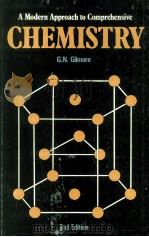
- A Modern Approach to Comprehensive Chemistry Second Edition
- 1979 Stanley Thornes Ltd
-
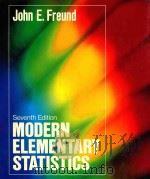
- MODERN ELEMENTARY STATISTICS SEVENTH EDITION
- 1988 PRENTICE-HALL
-
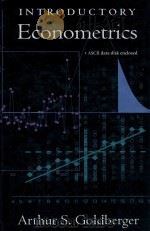
- INTRODUCTORY ECONOMETRICS
- 1998 Harvard University Press
-

- INTRODUCTORY ECONOMETRICS WITH APPLICATIONS THIRD EDITION
- 1995 THE DRYDEN PRESS
-
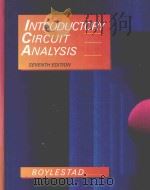
- INTRODUCTORY CIRCUIT ANALYSIS SEVENTH EDITION
- 1994 MACMILLAN PUBLISHING COMPANY
-

- Introductory econometrics with applications
- 1989 Academic Press ill.
-

- AMERICA A STUDY IN HERITAGE:AN INTERDISCIPLINARY APPROACH SEVENTH EDITION
- 1986 KENDALL/HUNT PUBLISHING COMPANY
-

- A PROBLEM-SOLVING APPROACH TO INTRODUCTORY ALGEBRA SECOND EDITION
- 1986 ADDISON WESLEY PUBLISHING COMPANY
-
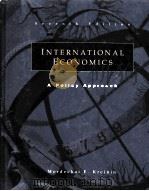
- INTERNATIONAL ECONOMICS:A POLICY APPROACH SEVENTH EDITION
- 1995 THE DRYDEN PRESS
-

- GEOMETRY A MODERN APPROACH
- 1968 ADDISON-WESLEY PUBLISHING COMPANY
-

- INTRODUCTORY OCEANOGRAPHY SEVENTH EDITION
- 1994 MACMILLAN PUBLISHING COMPANY
-

- CRITICAL CARE NUSIN A HOLISTIC APPROACH SEVENTH EDITION
- 1998 LIPPINCOTT
提示:百度云已更名为百度网盘(百度盘),天翼云盘、微盘下载地址……暂未提供。➥ PDF文字可复制化或转WORD


